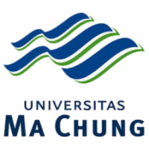
KLAUSA Vol. 4 No. 1 2020 opens with an article that understands language as a unique phenomenon. Chomsky once said that a language is a mirror of the mind. By understanding a language, we also understand the minds of the people speaking that language. While a language plays a central role because of its ability to influence the way people think and act, it also manifests itself into a cultural representation of the people using that language. In that case, a language is born from a social consensus that all members of the society agree upon in order to fulfill their needs. The language is structured yet it. In reality, language users have different ways to express their views and thoughts based on their cultures.
A collocation is an obvious evidence that describes how the unique characteristics of a language exist. Cyntia Veronika has investigated English and Indonesian collocations through the Kurzgesagt YouTube channel. Equivalent collocations describe relatively similar language patterns that both languages have shared. With this in mind, second language learners (L2) should be more likely to able to predict and express their ideas than the unequal ones. This fact reminds us of the theory of contrastive analysis (CA): the structure of the learners' L1 Affects the acquisition (the two terms acquisition/learning interchangeably) of their L2, in the sense that whenever there are similarities the L2 learning is facilitated, and when there are differences, the learning process is difficult. Veronika suggests the importance of having knowledge and continuously practicing the differences of collocations so that L2 learners become accustomed to appropriately using this collocation during the communication.
A language is also known as a representation of cultural behavior of the society. In this case, the language is a window to understand how people behave, feel and view the world. The following article is from Sandi Hamim who examines Disney's Aladdin (2019) in the context of narratology and genre. Known as the comedy film genre, Aladdin has unique characteristics because of its dramatic function
Klausa Vol. 4 No. 1 also includes some empirical studies on English language teaching: learning strategies in the classroom through cooperative learning. Puspita Nugraha Wibisono writes cooperative learning is not only about learning and sitting together; however, it also involves how the students assigned in group work are managed in such a way that they can learn a language optimally. This should include providing step by step guidance from learning to doing assignments. She mentions that the students have shown high percentage of perception on both cooperative group work strategies and representative assessment.
Mazroatul Ishlahiyah and Mira Shartika have written the integration of Islamic values in the development of teaching materials. In her article, she mentions about the integration of Islamic values into teaching materials. The design of the materials includes warming-up activities, main activities, games, reflection, and general knowledge of Islamic values. Supporting innovative audio materials can be further developed to make the materials completed. The teachers can use some existing references or elaborate new audio by creating new conversations containing Islamic values.
This issue concludes with an article by Yohanna Nirmalasari, which scrutinizes the patterns of arguments. In this article, Nirmalasari analyzes a number of articles written by university students to find patterns. In contrast to the general misconception that men and women think differently, Nirmalasari discovers that there is no particular difference in the pattern of argument delivery with regards to gender. The difference that she discovers lies in the level of complexity of an argument, which is not related to one’s gender.

 PDF Download: 203
PDF Download: 203















